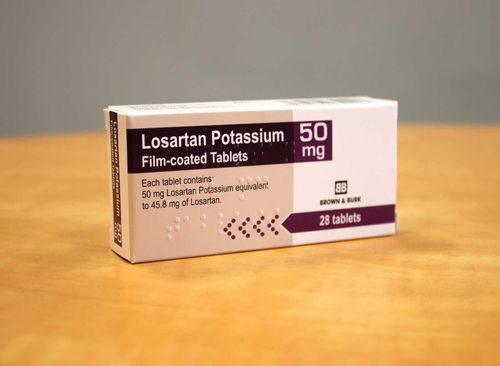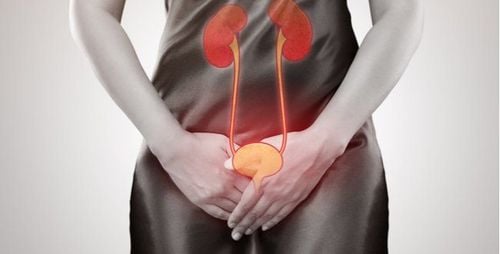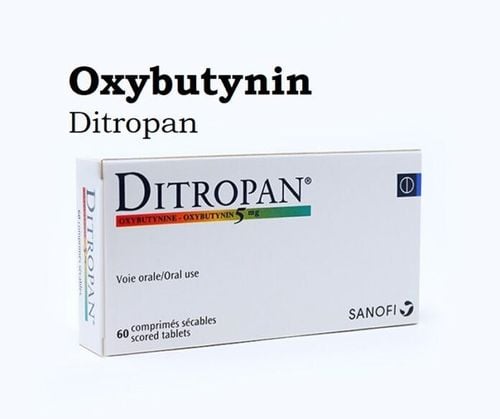This is an automatically translated article.
The article is written by Specialist Doctor II Phan Phi Tuan - Dean and Doctor Pham Van Minh - Department of General Surgery - Vinmec Phu Quoc International General Hospital.
Urinary tract infection is a common disease, ranked 2nd in bacterial infections. It is determined by the infection of the container (urinary system) and the container (urine).
Urinary tract infections are identified when present in the urine. However, urine culture for bacteria gives a very low (+) rate. Especially in Vietnam when most patients are admitted to the hospital after taking a lot of antibiotics at home. Therefore, using only bacteriological culture criteria to diagnose urinary tract infections will miss many patients.
Therefore, urinary tract infection is in fact diagnosed when there are clinical manifestations combined with subclinical (leukopenia or microbacteriuria).
1. Clinical criteria
The clinical manifestations of urinary tract infections are diverse, depending on the site and location of the infection. Patients may have symptoms of lower urinary tract infection such as:
Discomfort in the lower abdomen. Frequent urination, painful urination, less urine. No back pain and no fever. Patients only have fever when there is inflammation or abscess of the prostate gland. There is blood in the urine.
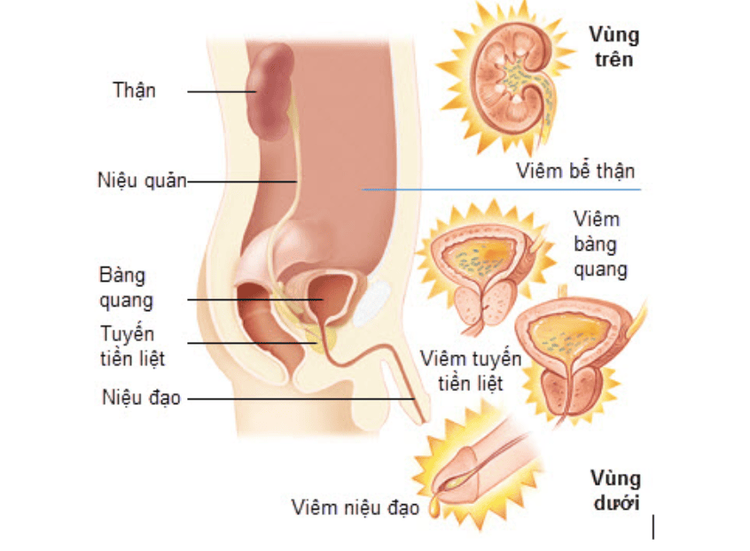
Những vị trí nhiễm trùng đường tiết niệu thường gặp
Back and flank pain. High fever with chills. Nausea, vomiting, weakness, fatigue and general ill feeling. Mental disturbances or confusion in the elderly.
2. Paraclinical criteria
Leukocytes: have at least one of the following criteria: Leucocyte esterase dipstick/urine (+) Urine smear counts ≥ 10 white blood cells/mm3 NT. After centrifugation, > 10 leukocytes/μl NT were counted. Microorganisms : have at least 1 of the following criteria: Diptistick nitrite (+). Gram stain of fresh urine/oil field glass (+). Urine culture (+). A urine culture is considered (+) when ≥ 105 bacteria/ml midstream urine in women or 104 bacteria/ml midstream urine in men or straight tube in women.
However, in urinary tract infections with obstruction, if the obstruction is complete and the contralateral kidney is free of infection, the results of culture or leukocytosis are usually negative (-), which causes many problems. difficult to diagnose. In this case, endoscopic findings or urine culture on the site of obstruction after surgery may be helpful in corroborating the previous diagnosis.
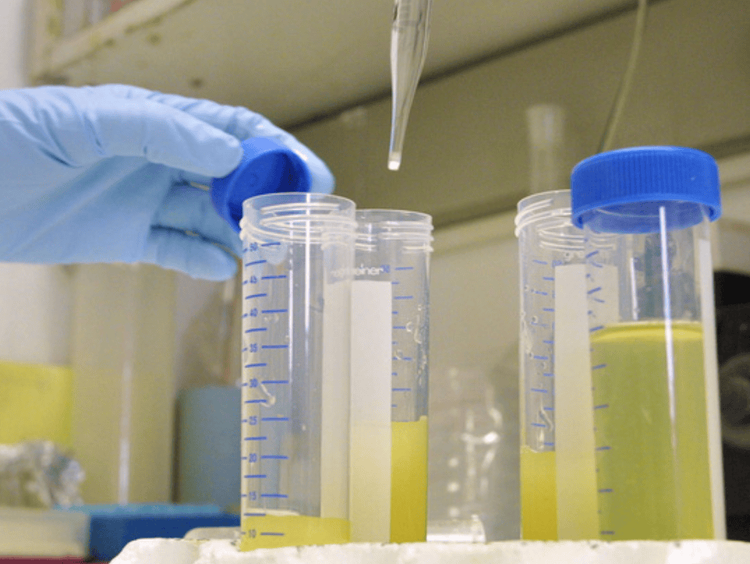
Nuôi cấy nước tiểu
Urinary tract infection is a disease that can affect life and even cause death if diagnosed and treated inappropriately. Therefore, we need to screen and determine our disease status when there are suspicious clinical manifestations.
Vinmec International General Hospital now has a Urology - Stone Screening Package, for all customers who need screening to detect urinary diseases early. The examination package includes many utilities as follows:
Being examined and consulted by urologists. Perform diagnostic X-ray and ultrasound services. Early detection of urinary diseases, stones and timely treatment advice.

Định kỳ kiểm tra sức khỏe, giúp mọi người phát hiện bệnh lý sớm
Customers wishing to be examined at Vinmec International General Hospital can register for an examination at the nationwide Vinmec Hospital and Clinic system HERE.
SEE ALSO:
How to treat urinary tract infections in children Urinary tract infections during pregnancy: Causes, signs, and ways to prevent Early intervention to save patients with urinary tract infections due to stones





